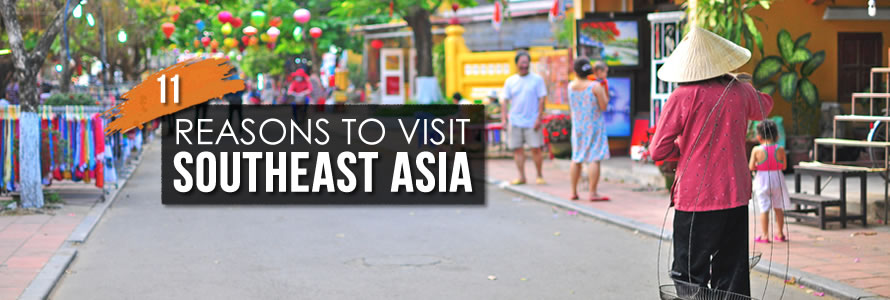Southeast Asia has been a beloved darling of the traveller set for a long while now and for good reason. This tropical set of countries is often presented as the easiest place in the world to begin globe-trotting adventures for complete novices but the truth is it keeps veterans coming back time and time again too. Its appeal is nothing short of magnetic, its delights nothing short of incredible and its reasons for visiting almost endless.
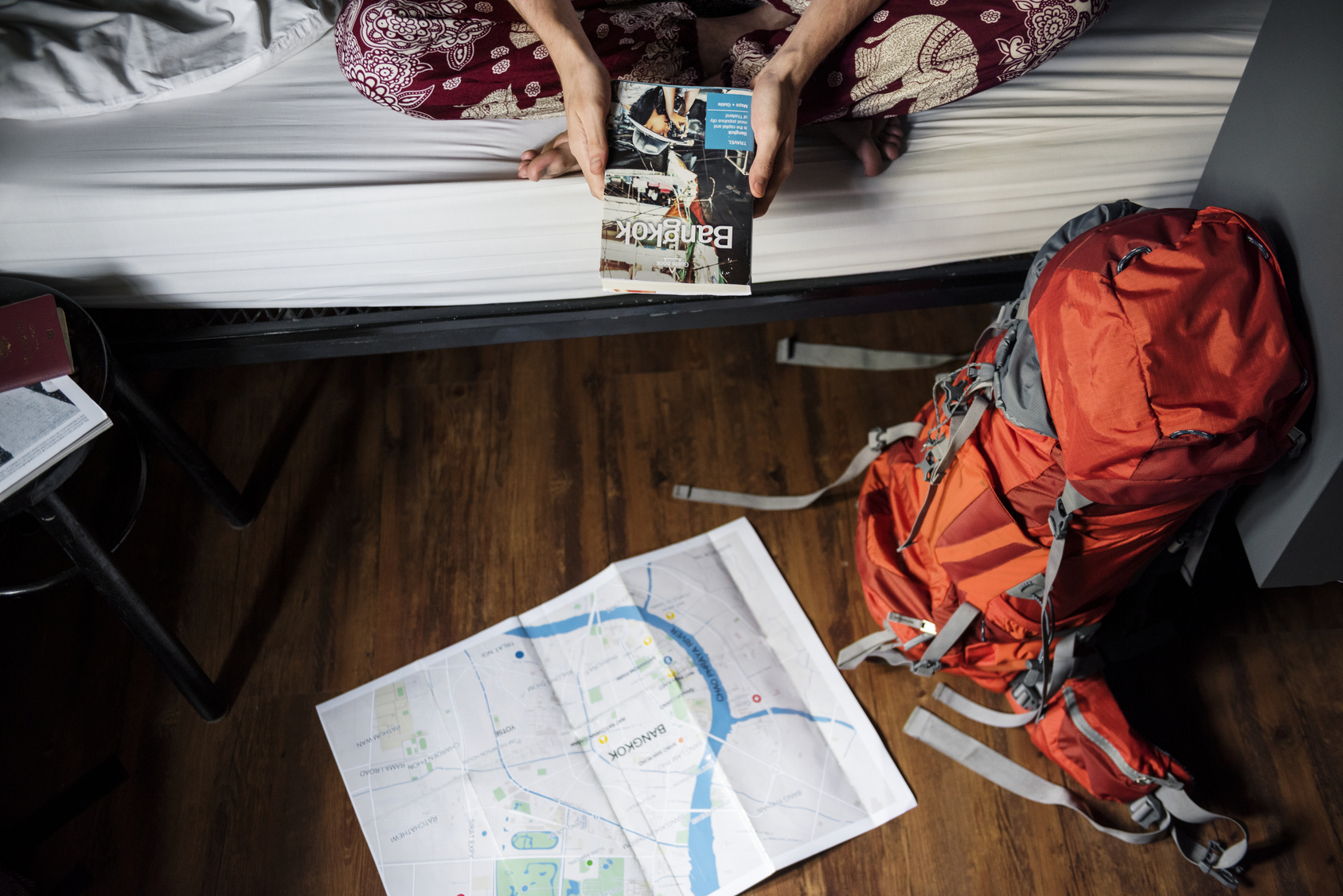
1) Collect Lots of New Stamps in your Passport
The countries of Southeast Asia are collected together in a huddle which makes it not one destination but a fascinating string of them. Even more to the point is the ease of moving between them. The infrastructure is so established and transportation options so plentiful and mega cheap – including the flights – that few people head to this part of the world and don’t end up seeing several countries in one trip.
The getting there is often as big a part of the adventure as arriving at a new destination. You can cross the Thai/Malaysia border on a sleeper train, slow boat down the Mekong to get from Thailand to Laos or hop on a ferry to take you from Malaysia to Sumatra in Indonesia.
The bottom line is collecting a whole heap of new stamps in your passport, checking out several cultures and gifting yourself a lifetime of memories is straightforward and achievable even if you are completely new to the whole travelling game.
2) More Bang for Your Buck
Although the ludicrously cheap prices of Southeast Asia might be behind us the fact remains that no other continent offers such a budget-friendly group of countries. Here, even the thriftiest traveller will have the opportunity of eating great food, signing up for unique and incredible tours and experiences, buying highly unusual souvenirs and bedding down in beach huts located at absolute beach-front. In short, the kind of things which elsewhere in the world would be reserved only for those with huge wallets. Your hard earned travel money simply goes further here.
That means you can cram more in. Instead of being like a kid with their nose pressed up against the sweetshop window trying to decide which sweet to buy for their penny you can stroll right in and have a bit of everything. No need to deliberate over which of those highly-appealing experiences to choose – you can do them all. And because everything is so affordable you will also be able to have more of an extended trip and get to all the places you want, no matter how far afield, as transport is cheap too.
Even the luxurious here can be within a thrifty traveller’s budget. This means that if you occasionally fancy treating yourself – a meal in a more formal restaurant, a night or two in an upscale hotel, getting yourself dive qualified etc – you can and all still for a fraction of what you would pay elsewhere in the world.
3) Tonnes of UNESCO World Heritage Sites
Scattered liberally around the countries of Southeast Asia are 38 UNESCO World Heritage Sites – a coveted recognition which implies something super-special awaits.
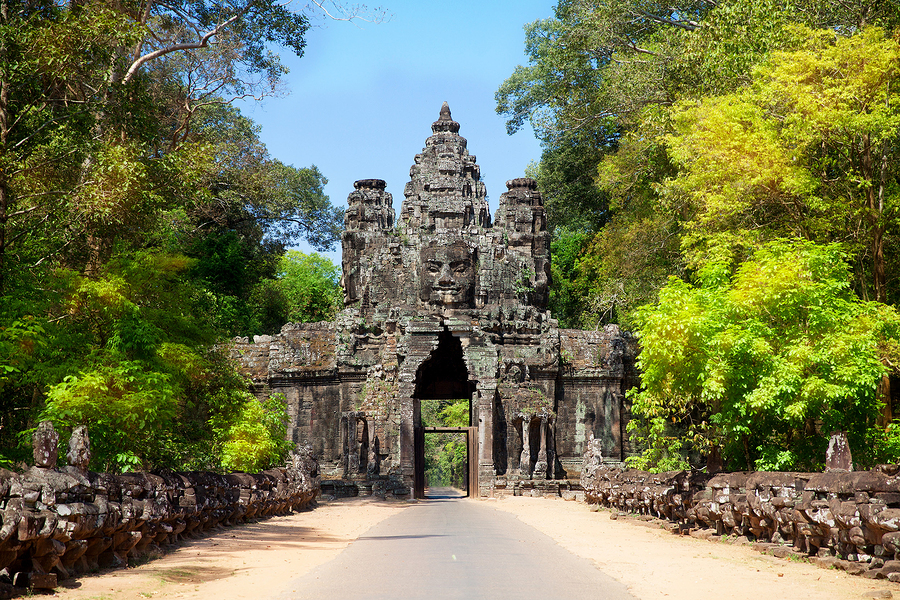
The most famous of these is perhaps the 400 km² archaeological site and temple complex in Cambodia known as Angkor Wat – the world’s largest religious monument. But Southeast Asia’s impressive list contains a great deal more as well. There are whole towns or historic centres of cities such as the ancient kingdoms of Ayuthaya and Sukhothai in Thailand or Melaka and George Town in Malaysia with their colonial splendours, Vigan in the Philippines, magical Luang Prabang in Laos or pretty-as-a-picture Hoi An in Vietnam.
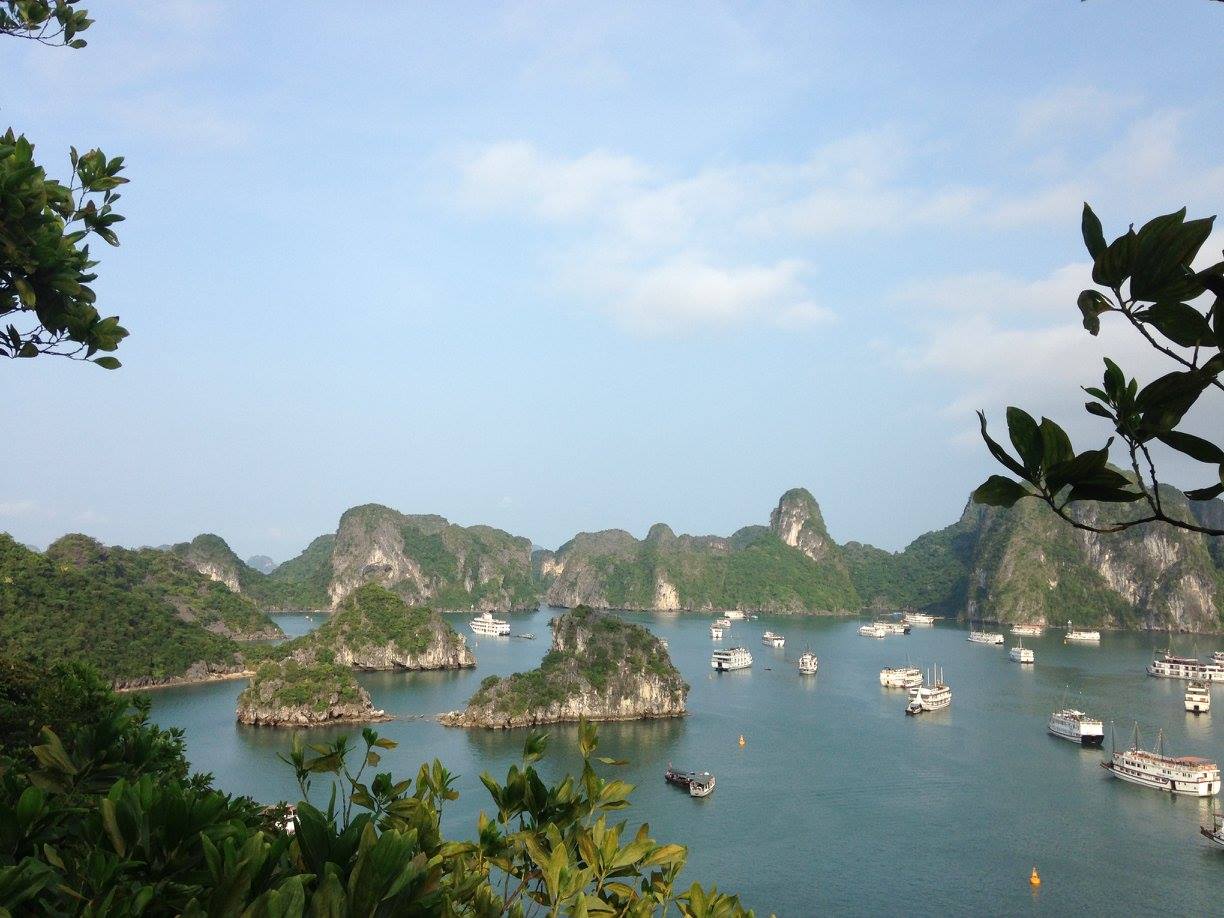
Then there are the naturally magnificent such as the stunning Ha Long Bay in Vietnam with its stunningly spectacular seascape of thousands of sheer limestone pillars and islands. Or the Puerto Princessa Subterranean River in the Philippines, considered one of the New 7 Wonders of the World and which can be travelled by boat. Then there are whole national parks and forest complexes full of fascinating flora and fauna such as Indonesia’s Komodo National Park where the giant and often ferocious lizards known as Komodo dragons live.
The man-made delights include such things as the temple complexes of several countries, the Baroque Churches of the Philippines, Singapore’s Botanic Gardens and the ancient rice terraces in the Philippines.
4) Tropical Tranquility, Wild Party…Or a Bit of Both
There are some of us who want to party all day every day and there are some of us who want to hide ourselves away in some tropically idyllic spot without a glow stick in sight. The majority of us are happy with a bit of both and that is exactly what Southeast Asia can give you.
No matter how wildly you want to party you can find spots all over this region which will take it to whatever level you can handle. Party hostels abound and there are even whole islands – particularly in Thailand – where abandoned hedonism is the watchword. Although Thailand was the original home of the full moon party these (as well as half-moon, new moon and any-moon-will-do parties) have now sprung up all over and some destinations have boomed as a result of deliberately making themselves party central such as Vang Vieng in Laos, Gili Trawangan in Indonesia and Sihanoukville in Cambodia.
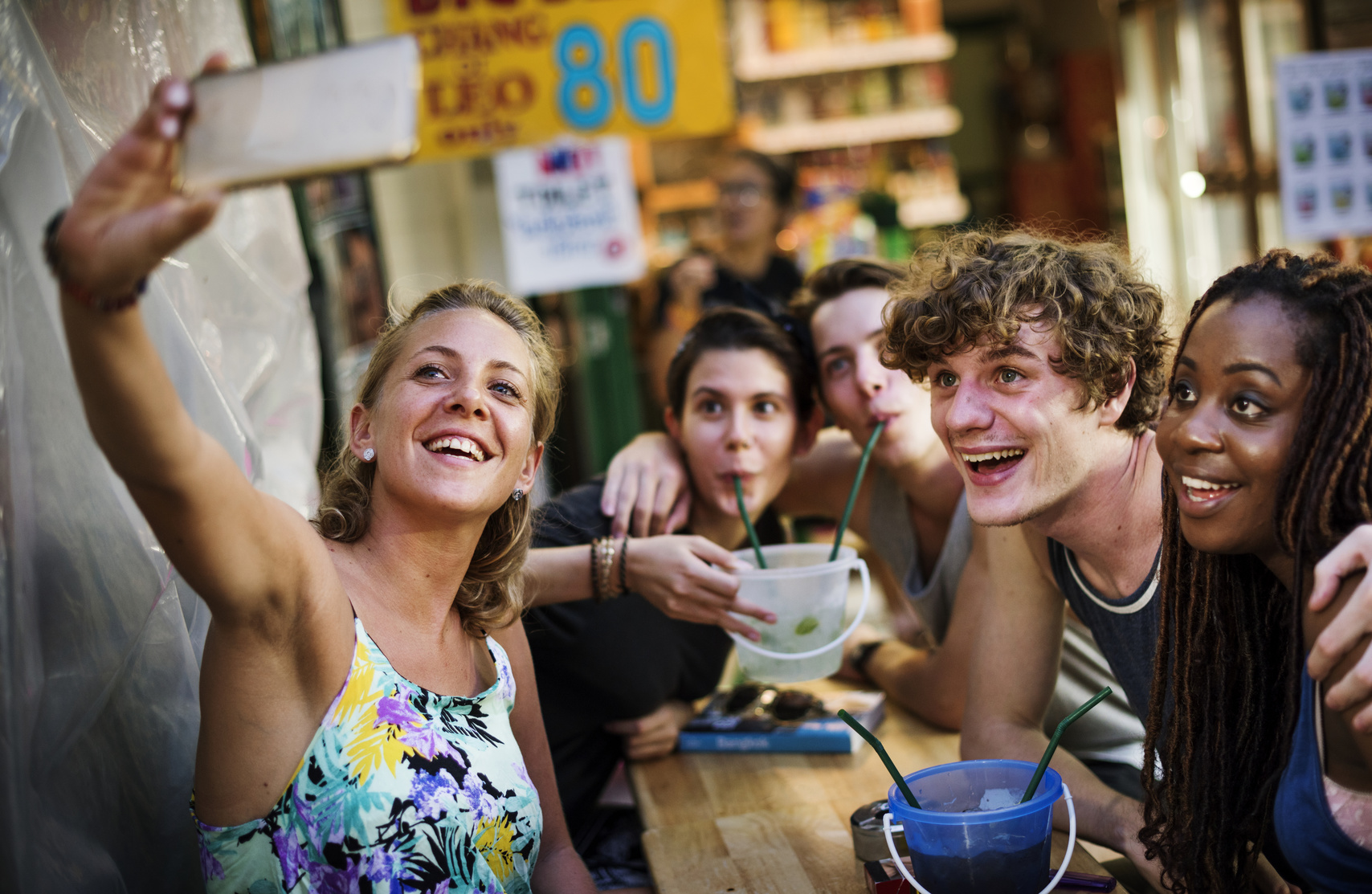
There are even some special places which manage to offer the extremes of both worlds within a fairly confined area so tranquil hideaway and crazy after-dark fun can be possible within the space of a few hours. Koh Tao in Thailand is one such destination. One side of the island is very definitely peopled by the young, happening crowd in search of booze cruises, pub crawls and fire parties while the other side of the island is full of tiny tucked-away coves where the only sound is the lapping of the azure sea on the white sands.
5) Incredible Cuisine and Street Food Culture
Let’s cut straight to the facts – Southeast Asia is a foodie’s heaven. Very few people come to this part of the world and don’t end up leaving it raving about the food. If you have never been to any Asian countries before there are going to be a whole bunch of flavour sensations waiting for you here that you couldn’t even have imagined, not just because of the use of exotic herbs and ingredients but also because of the way things are cooked.
With so many islands present high quality fresh-as-it-comes (that is, straight from the fisherman’s boat) fish and seafood are easily found and as they are so cheap things such as a lobster meal at a beach hut restaurant as the sun sets is on the menu for everyone.
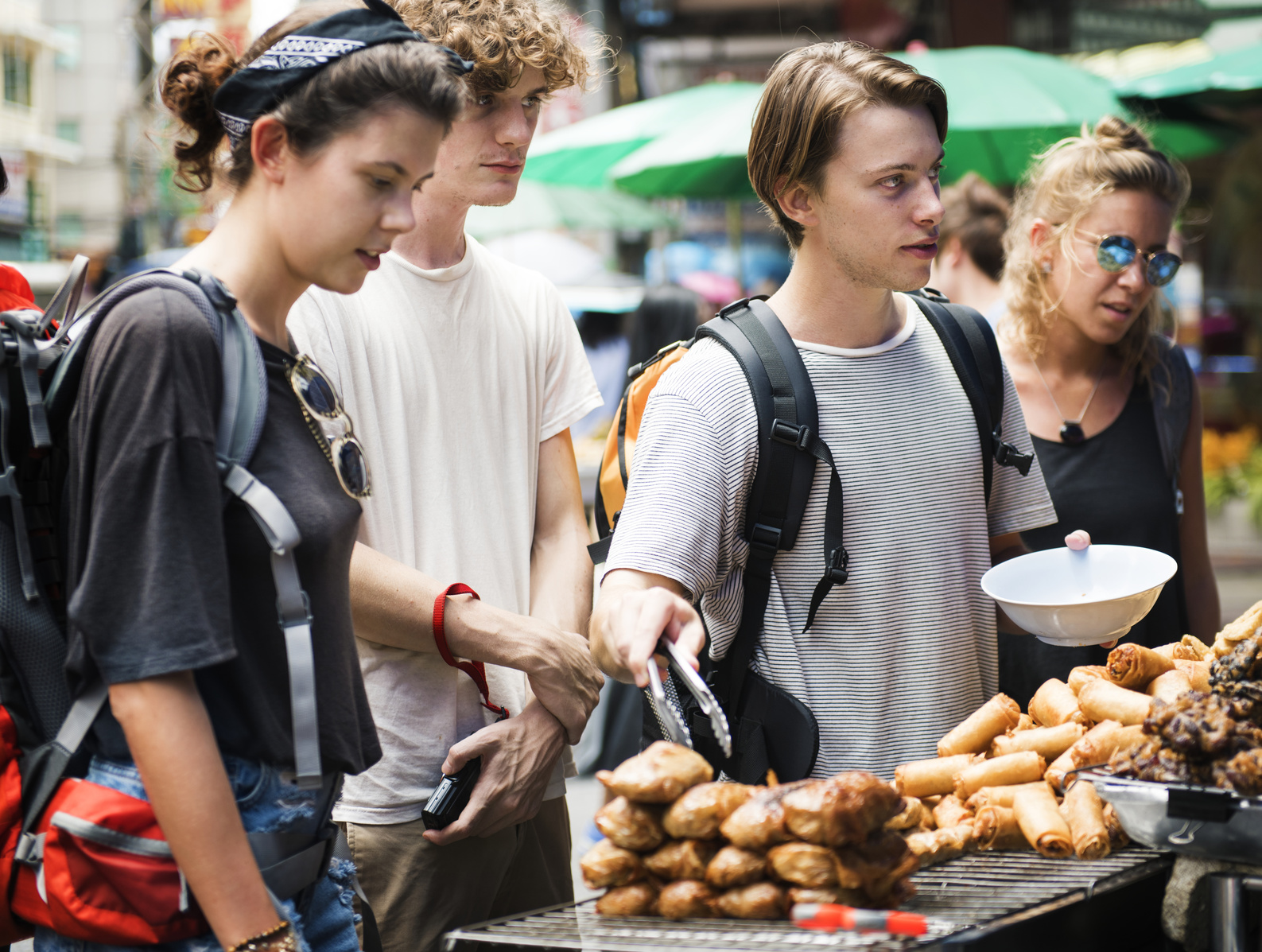
Malaysia in particular is a great country for a bit of everything culinary-wise. Because it is such a melting pot of cultures you will find genuine Chinese, Indian and Thai food along with European-influenced choices thanks to its colonial history, as well as Malaysia’s own take on specialities. And then there are the fusions of two or more of these influences which make the fare here highly distinctive and memorable.
Such colourful, flavourful and diverse culinary treats are only half of the food story though. Southeast Asia has a street food culture like nowhere else in the world. Food carts, stalls and whole sections of markets dedicated to serving food can be found around the clock providing customers with everything from soups to coconut pancakes. You could eat all week from food stalls in this part of the world and still probably pay less than you would for one meal back home.
6) An Established Tourist Infrastructure
A comprehensive tourist infrastructure doesn’t mean everywhere is touristy and spoiled. Southeast Asia is packed with places which allow you to remove yourself from the crowd or wander far off the beaten track if that is what you want. What it does mean however is that anything you do want to do becomes much easier. Getting around couldn’t be simpler with well-established train, bus and ferry networks and a choice of budget airlines. The tourist infrastructure makes bookings straightforward and hassle-free and exploring little-known gems off the main tourist path all starts with being able to get there in the first place.
Tours come in every shape and size and cater for tastes from the mainstream to the decidedly bizarre. You can sign up for experiences which last anything from an hour to weeks. They are an excellent way to instantly hook-up with like-minded souls such as a 3-day hike and kayak into the Laos wilderness or to go on safari to see elephants in the wild.
A great tourist infrastructure also means there is always somewhere to stay ranging from a hostel in the middle of a city to a home-stay with locals in the back of beyond.
7) Getting from A to B – An Adventure in Itself
It is unlikely you are ever going to visit any other part of the world which has such a diverse and inventive variety of public transport options. So different are several of these options that the journey becomes far more of an adventure than actually arriving at your destination.
On the transport menu are kitsch-ly painted Jeepneys, highly manoeuvrable tuk-tuks, rattly songtaews, bicycle rickshaws ranging from the basic to the elaborate, motorbike taxis, converted military trucks, romantic long-tail boats, carts pulled by ox or mule, rickety bamboo trains…and the list goes on and on.
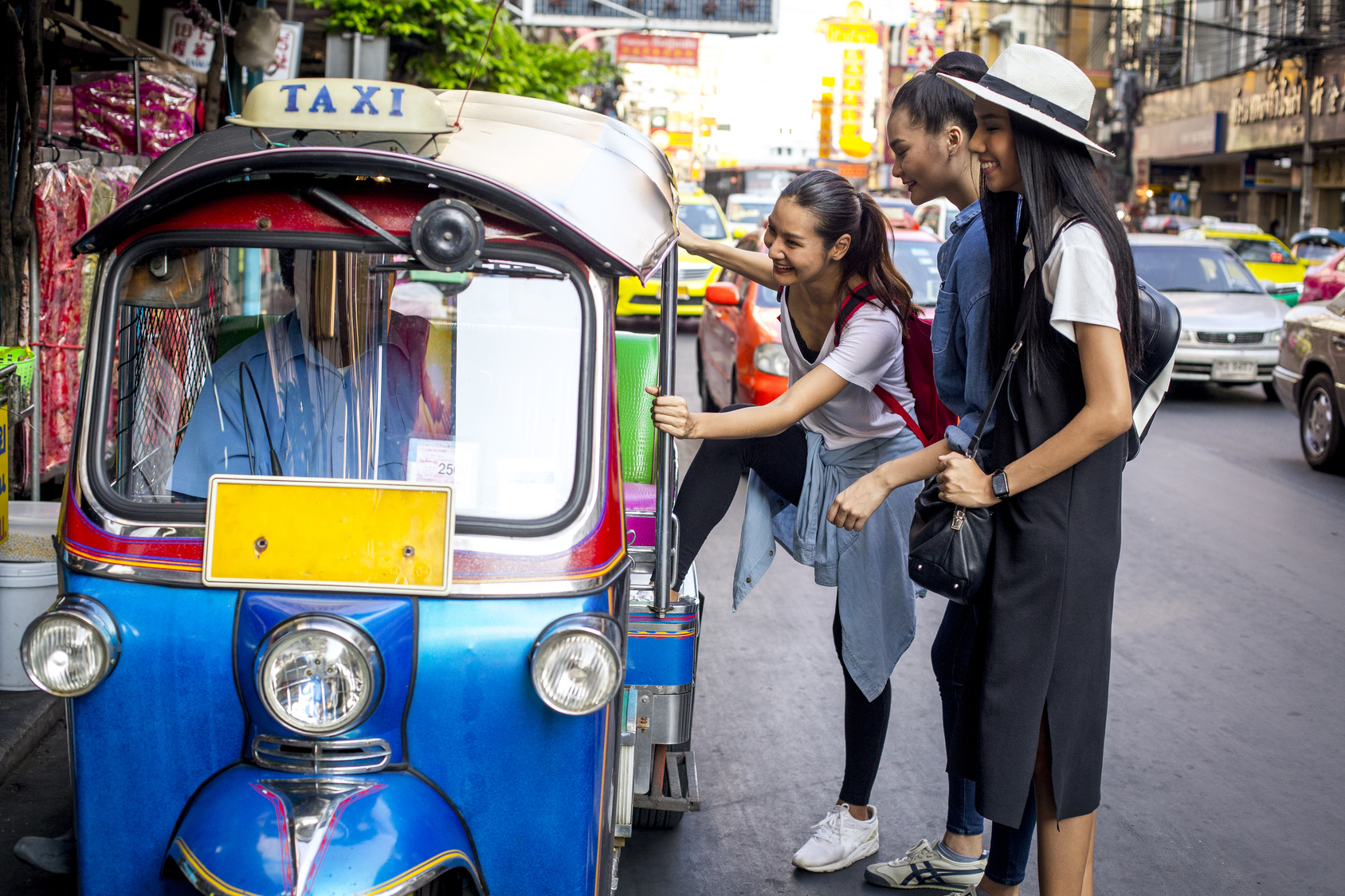
Sometimes a country or a specific place takes one of the recognised forms of transport and gives it their own special twist. One perfect example of this is the bicycle rickshaw of Malacca/Malaka in Malaysia. The town has a mega fleet of these where each seems to be vying with all others for who can bedeck their vehicle with the most flowers while integrated speakers blast out musical genres ranging from Westernised pop to sickly sweet Asian love songs.
At times you are going to have to embrace the adventurous or turn back. You might never have imagined you would find yourself hanging on for dear life in the back of a wildly swaying oxcart as it crosses a dilapidated wooden bridge but this might be your only option to reach that picturesque riverside hut on stilts where you are supposed to be spending the night.
8) The Exotic & The Truly Different
Although every country in the world offers different sights and experiences to those you might find back home Southeast Asia dishes that up in spades and in a way which hits every sensation. There will be times where you might be standing somewhere and everything which surrounds you is touched by an element of the brand new. The air will be full of sounds and smells you have never heard or smelled before, your eyes will be taking in vehicles, people, buildings, scenes and experiences which all appear exotic and even otherworldly.
Watching an endless line of saffron-robed monks in the streets of Luang Prubang in Laos at dawn with their alms bowls, heading out to a tropical island on a long tail boat with its colourful streamers flying, gazing over the vast tea plantations of Malaysia dotted about with colour as the tea-pickers go about their work, wandering markets which sell things such as snake and insects as standard fare or watching the processions or rituals of religious festivals such as the mayhem of Songkran to the hauntingly lovely thousand lights of Loi Krathong…all of these will paint pictures in your memory while enchanting, exciting and sometimes even bewildering you.
9) A Land of Temples
Southeast Asia has so many temples that should you spend a lifetime here it is unlikely you could visit them all. Within the general umbrella of temples you will find the glorious ruins of large to enormous ancient sites which date back hundreds of years, complexes which incorporate working temples and tiny isolated temples on islands or hilltops which are little bigger than a shed. There are even temples inside caves such as at Marble Mountain in Vietnam.
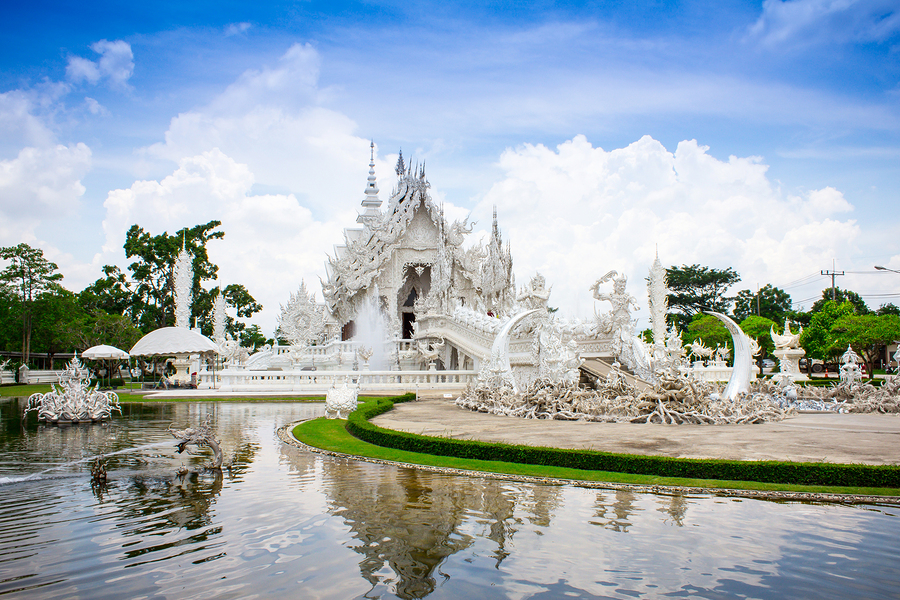
So plentiful are the temples of South-east Asia that if you spend an extended amount of time here you will almost certainly find yourself getting ‘templed out’ and the image of another gilded temple glinting in the sun will draw no more than a cursory glance from you. However, there are some places which rank as extra special no matter how many temples you have previously added to your been-there-done-that list. Some for the temples themselves and others for what you can see inside.
Included on this list are:
- Ta Prohm, Siem Reap, Cambodia – used in both Tomb Raider movie and game and dating back to the 12th century this jungle-hugged temple can be seen today pretty much as it was discovered with its fantastically snaking tree roots weaving all around the stonework. The monkeys playing in the trees above add to the lost city feel.
- Wat Pho, Bangkok, Thailand – tucked into a quiet corner of the Wat Pho complex is a building known as The Temple of the Reclining Buddha which houses an image so colossal it seems to be almost bursting out of its surroundings. The feet alone of this image are 5 metres long.
- Pura Ulun Danu Bratan, Bali, Indonesia – dedicated to a Hindu water goddess, this temple complex sits on a string of little islands making it as photogenic as it gets.
- The White Temple (Wat Rong Khun), Chiang Rai, Thailand – part fairytale castle, part elaborate wedding cake, created totally in white with millions of sun-reflecting mirrored-tiles, this incredibly stunning contemporary Buddhist complex features large helpings of the totally unexpected such as Harry Potter, skulls, a partly emerging Predator and possibly the world’s most stunning public loos.
10) From Monkeys to Monitor Lizards – Incredible Wildlife
Although other continents seem to get all the press when it comes to listing top destinations for wildlife Southeast Asia is packed with fascinating native fauna. Much of this can only be seen in Asia and a lot of it is rare. Animals such as tigers and leopards live here although the chances of spotting either of those are most unlikely.
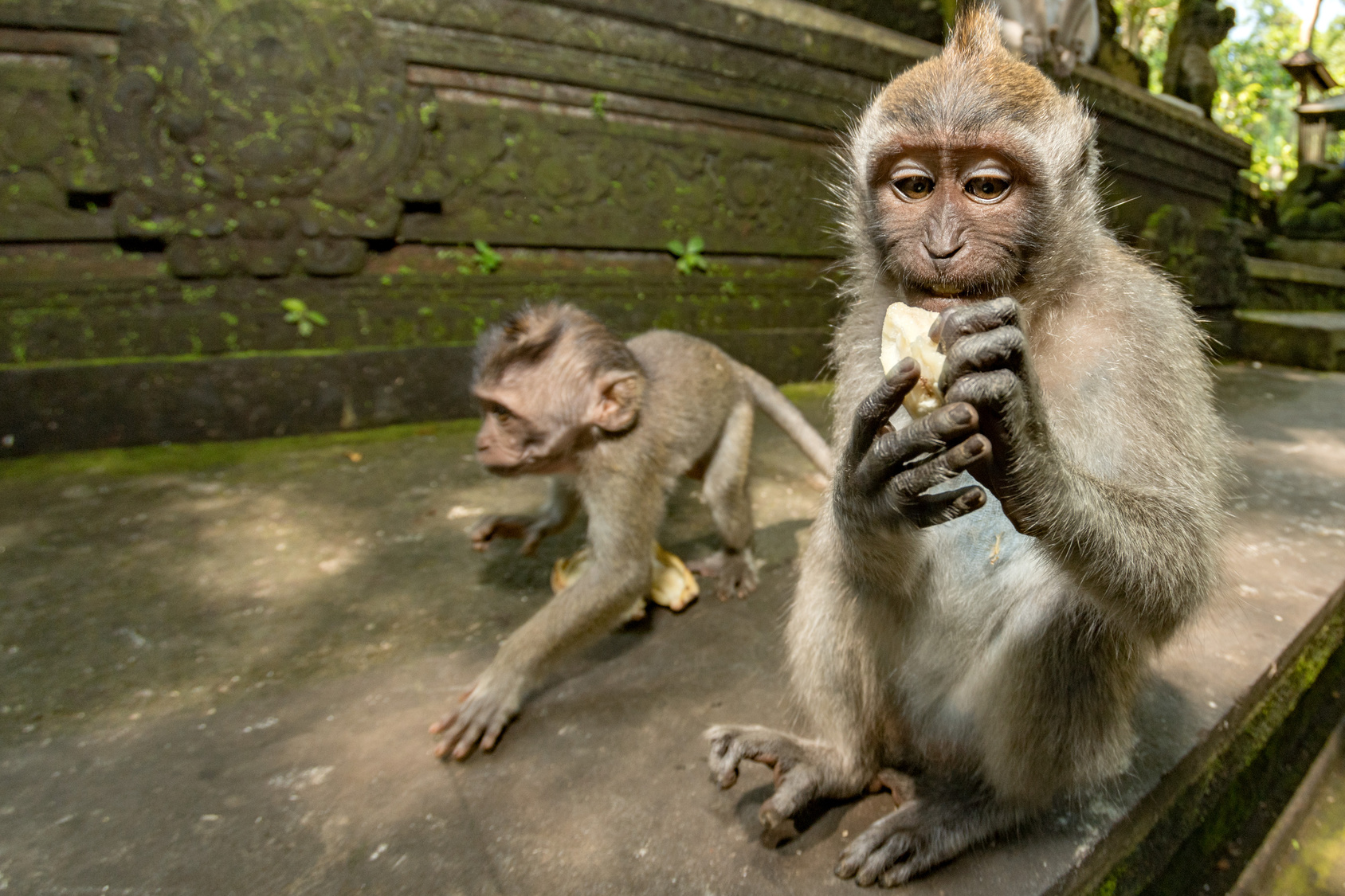
Top of most people’s wildlife spotting wish-list when they come here are wild elephants and monkeys. The latter in a variety of species are really not at all difficult to find and encounters can occur without any effort whatsoever. Elephants, however, are another matter. You will have to head to specific places to see elephants in the wild but these are possible as either DIY experiences or tours. Southeast Asia has a large number of captive or ‘domesticated’ elephants many of which are used in the tourist industry and have to endure all kinds of unethical treatment. If you are thinking of riding an elephant you might want to read this first.
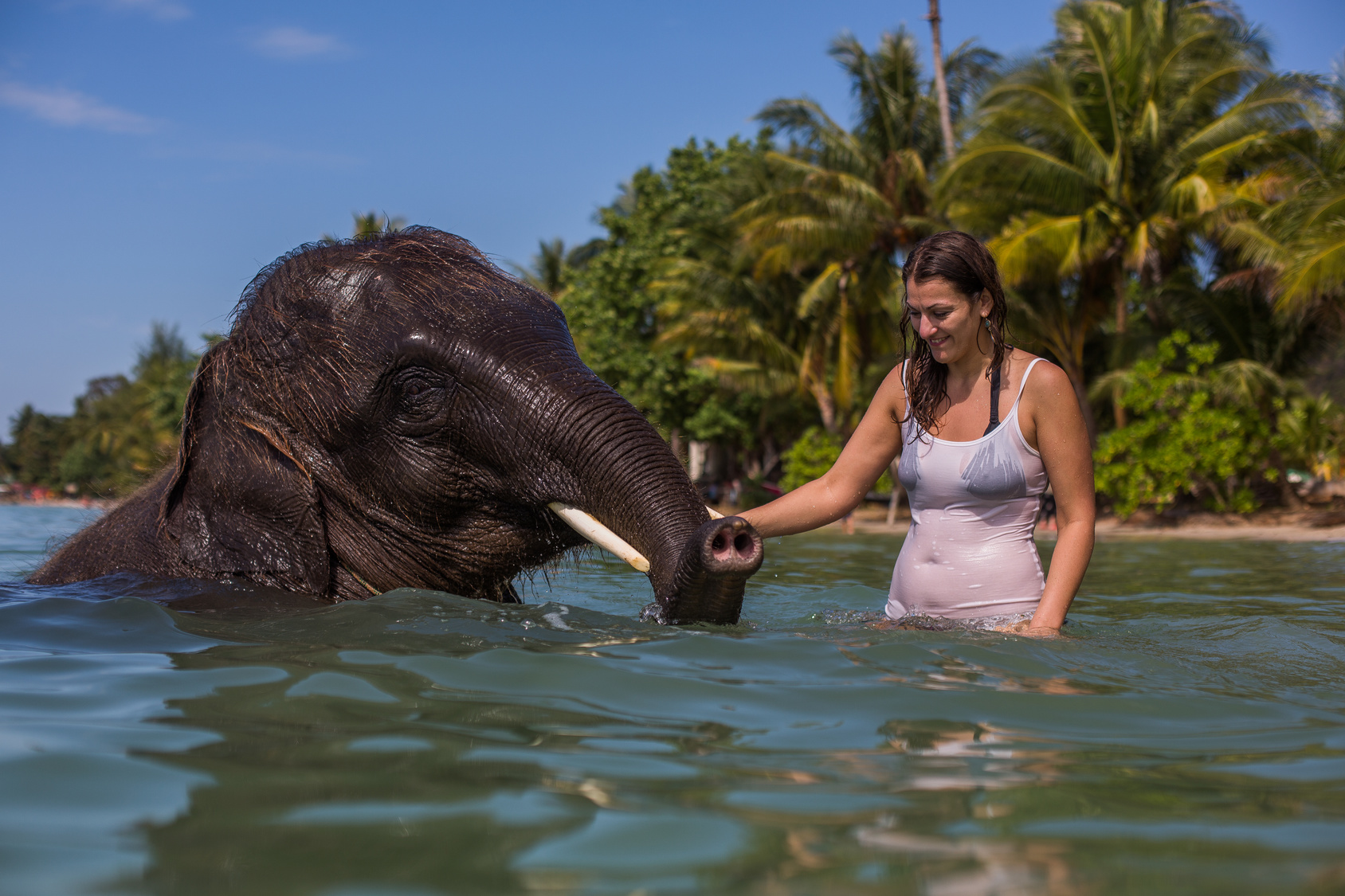
Monkeys and elephants aside there are all kinds of other incredible wildlife here. Some such as turtles, bears, crocodiles and exotic birds can be found all over while other species can only be found in specific places. This latter category includes the mighty and fearsome lizards of Indonesia known as Komodo dragons, the rare river dolphins found in the waters between Laos and Cambodia and the world’s largest fish – the whale shark. These mighty but gentle giants which average around 12 metres in length can be seen while diving in several places but Donsol Bay in the Philippines is dubbed ‘the whale shark capital of the world’ and sightings are practically guaranteed between February and April. Tours for snorkelling with the whale sharks are, understandably, a big tourist thing here.
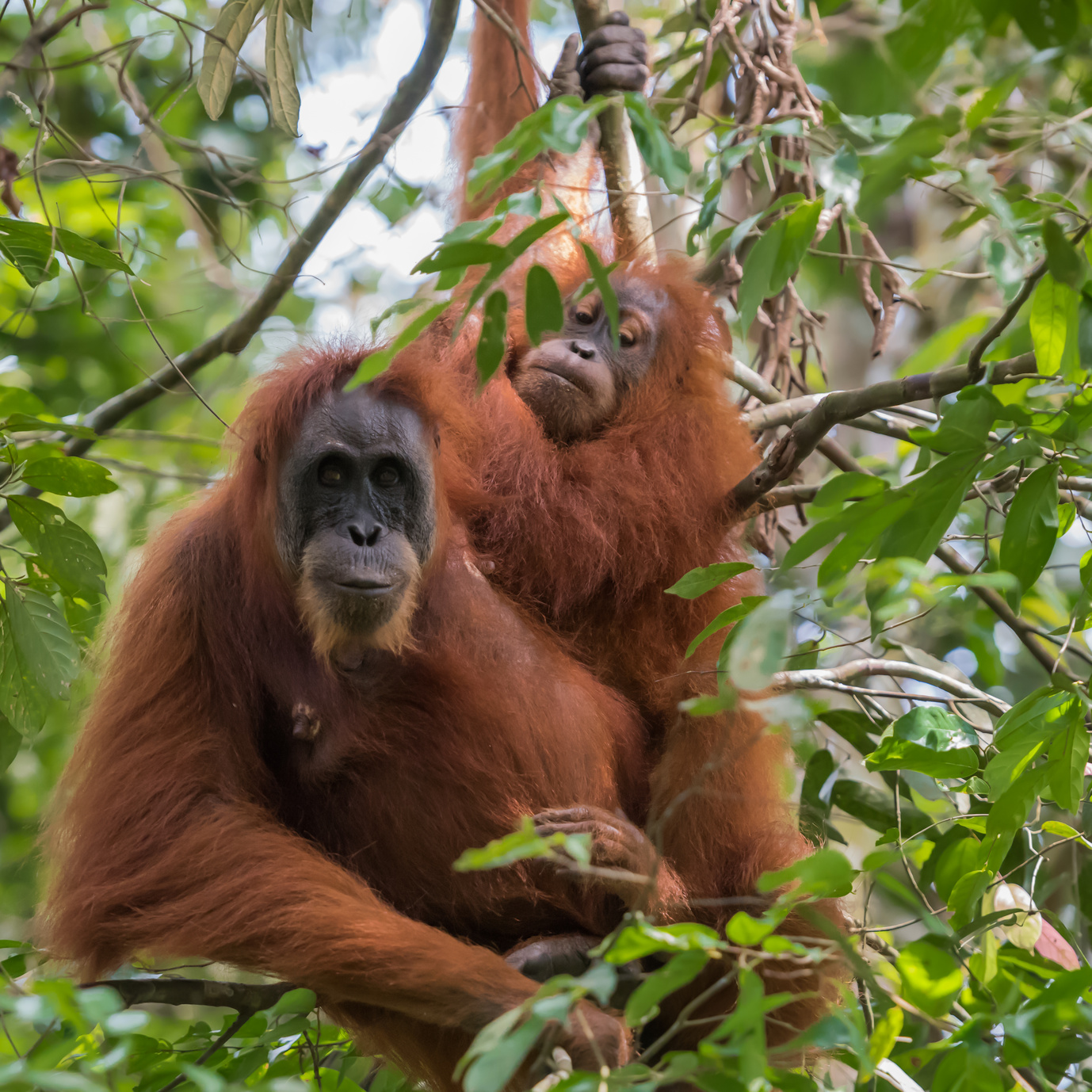
Another very location-specific species is the orang-utan. Found only in Borneo and Sumatra, experiences to see these rare apes in the wild are offered by a range of companies with experiences ranging from day hikes to overnight treks into the jungle.
If you want to bag a lot of species spots in one go head to one of the region’s wildlife hotspots such as the lake-filled Ba Be National Park in Vietnam, Taman Negara National Park in Malaysia – one of the world’s oldest rainforests – and the rainforests of the Cardamom Mountains, Cambodia.
11) And Ahhh, The Beaches!
If you are a fan of white sand backed by coconut palms and fringed by warm turquoise seas Southeast Asia is a destination which can give you a different beach for every day of the next 30 years of your life. So idyllic are the beaches here that many visit this part of the world for that reason and no other.
Yes, it is true that many of the more popular spots are now overdeveloped and heaving with folk but with thousands and thousands of kilometres of coastline there are still plenty of places where you can be totally alone or share your find with no more than a handful of others. If you truly want to get off the beaten track and unearth your own unspoiled gem hire a boat or even a kayak or paddle-board and get exploring.
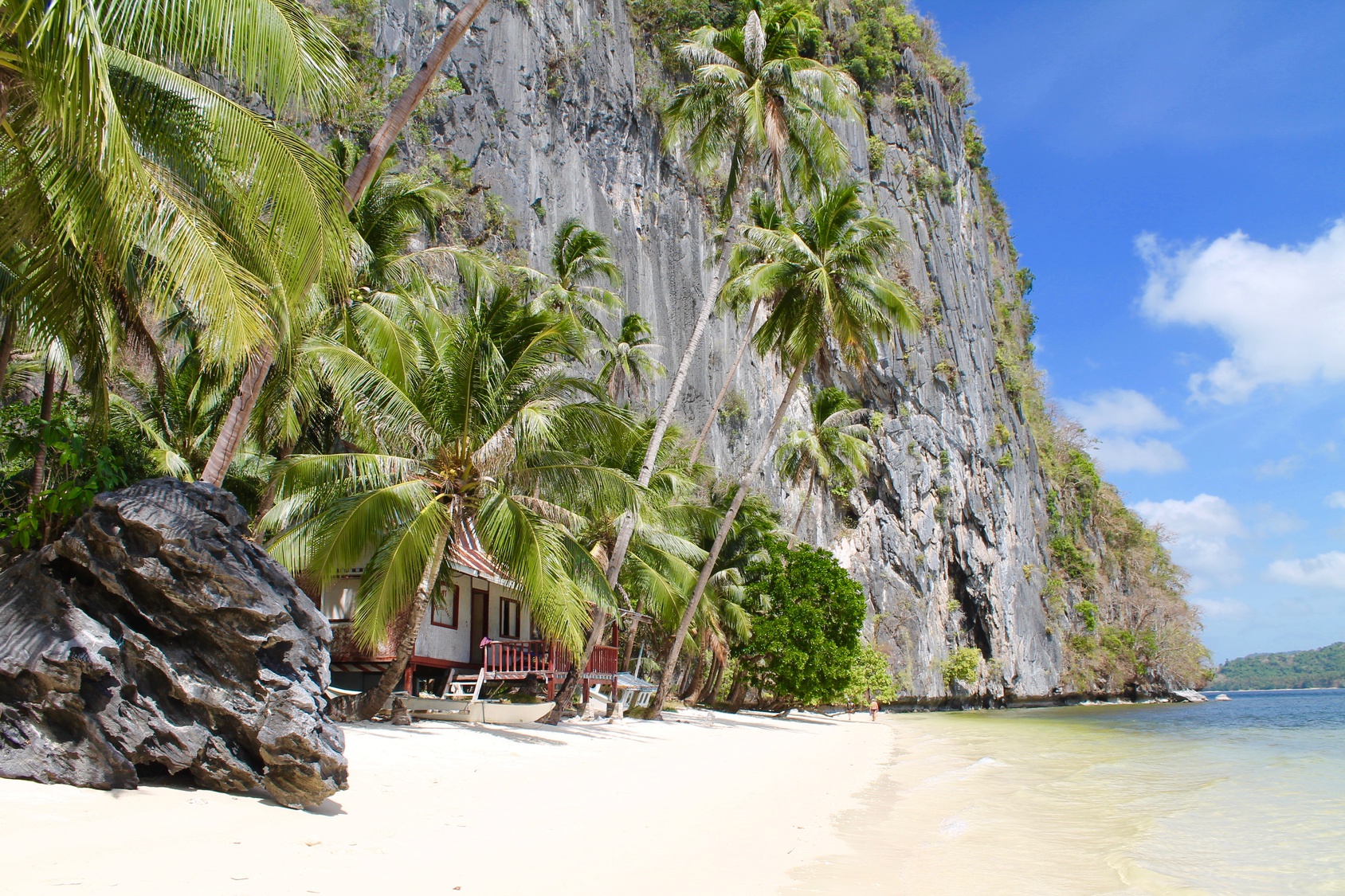
So which are the best beaches? This is a hard one to call because although there are some spots which regularly make it onto lists of South-East Asia’s best beaches (and even world’s best) it really depends what you are looking for. Do you prefer your beach time with lots of facilities or is your dream place somewhere where your footprint is the only one in the sand outside your beach hut?
If you are looking for Robinson Crusoe-type experiences head to Thailand’s Koh Tarutao where monkey’s might be your only companions, pick from endless isolated islands in the Philippines or make your way to Sumatra where seeing another tourist on the beach is highly unlikely in the majority of places.
If on the other hand you like lively places with the option to party head to the south of Bali or Phuket, Koh Phi Phi or Koh Phangan in Thailand. If you want something in the middle of these two extremes take your pick from a possible list of thousands and thousands of places. And don’t forget your snorkel mask. The snorkelling in this part of the world can be anything from good to out of this world.

